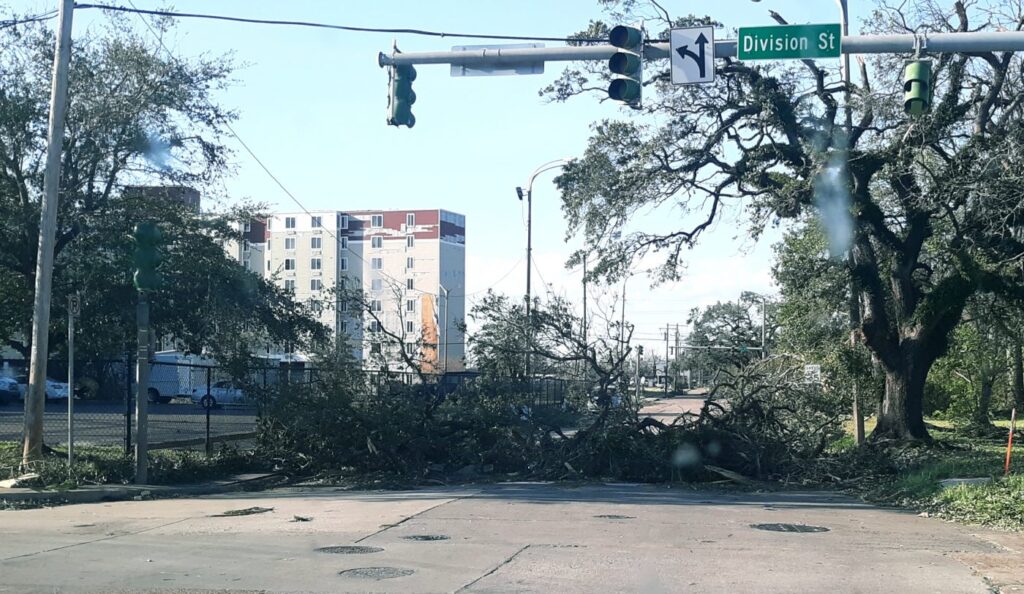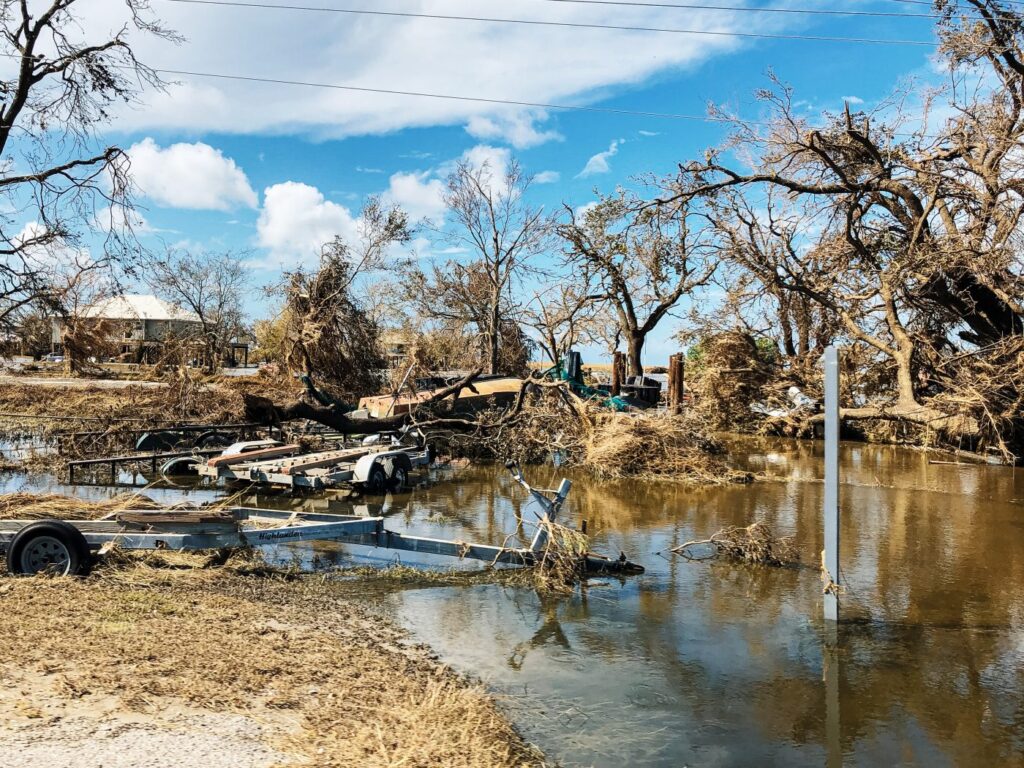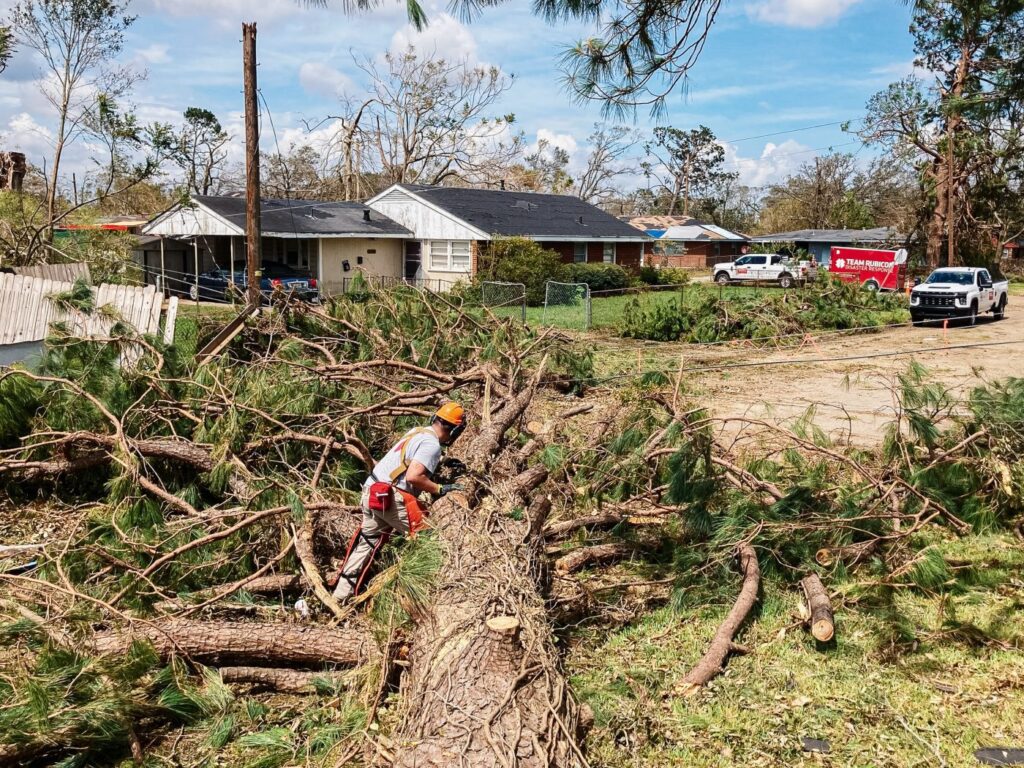After churning in the Gulf of Mexico, Hurricane Laura began approaching the upper Texas and southwest Louisiana coasts the afternoon of Wednesday, August 26, making landfall around Cameron, LA—just east of the border with Texas in the early hours of Thursday, August 27. With sustained winds at 150 mph, Hurricane Laura arrived as a Category 4 hurricane, but just shy of Category 5. Across the state, an estimated 104,000 residential properties experienced Category 1 winds, while at least 1,500 experienced Category 4 level winds.
As it moved north and east, the storm had weakened into a tropical depression that would exit off the east coast on Saturday, August 29.
Hurricane Laura Makes Landfall and Isolates a Parish
More than 36 hours after Hurricane Laura made landfall, Cameron Parish, in the southwest corner of Louisiana, was still largely inaccessible to first responders looking to reach victims, and to disaster response organizations such as Team Rubicon looking to assess the area.

It’s believed that roughly 12,000 properties across Louisiana could have experienced some level of flooding as a result of the storm surges, and that about 1,230 have been destroyed, and more than 2,200 have experienced major damage. And, in Cameron Parish, the prognosis is still grim: as a Category 4 hurricane, storm surge and wind would likely have led to major destruction in the area.
“The Cameron Parish area did experience a lot of flooding from the storm surge, as well as wind damage and access to some of those coastal areas is still fairly limited, and even inaccessible,” explained Team Rubicon Sr. Associate of Operational Planning Lauren Vatier. “While we have not been able to assess those locations, we do know there was severe damage.”
Team Rubicon reconnaissance teams tried to push into the Parish and the town of Cameron on Thursday, to no avail. “There are two roads in from the east and west, we tried both, both were cut off,” said Oscar Arauco, Team Rubicon’s Recon Team 3 lead. “It was very hazardous with poles, broken trees, and power wires at windshield level and on the road. We made it as far south as Hackberry: devastated. But, offering a ray of hope: a few homes survived but with the grimly now-familiar tree or trees on their home or front yard.”

The Lake Charles area took the inland brunt of the storm and damage, with most of the destruction occurring downtown. By Friday afternoon, Team Rubicon reconnaissance teams assessed that at least 115 homes had some damage—primarily from wind—in nearby DeRidder which experienced the eye of the storm, while in DeQuincy, with a population of 3,000, nearly 90% of homes had some sort of wind damage.
Across the border in Orange, TX, vegetative debris lay strewn across roads and roofs, and Team Rubicon estimated roughly 250 homes had some sort of hurricane-caused damage.
Meanwhile, more than 500,000 people in Louisiana, 115,000 people in Texas, and 34,000 people in Arkansas remained without power on Friday. The prediction was that they would be struggling with lack of power for at least the next week to 10 days.
In Lake Charles, Route Clearance and Sawyers Move In
Even before Hurricane Laura made landfall, some disaster relief organizations, including Team Rubicon, had people and equipment staged and waiting. For Team Rubicon, this meant the organization was able to be on-site in the Lake Charles area, providing route clearance for corporations and homeowners alike, as early as Thursday, just hours after Hurricane Laura had passed through.

“The Hurricane came ashore with the fury of hurricanes past. It broke wood and bent steel. Doing reconnaissance, it was easy to tell the boundaries of the devastation. We drove through water, over downed wires, and around broken trees and poles,” said Arauco. “We reported with technology so others could piece together the grim reality. At night sleeping in sticky sweat, fighting off mosquitoes gives us an appreciation for those we will serve and our mission ahead. At least we are here, making an immediate impact through route clearance and generating disaster recovery power.”
In coordination with public works, Team Rubicon has been clearing large trees blocking roads in Sulphur, Carlyss, and Lake Charles since Thursday.
That sawing and debris removal work marked the beginning of what is expected to be a major operation for Team Rubicon. On Saturday morning, it began calling up local command and general staff volunteers and advanced-level sawyers to begin deploying to Louisiana. It was, the organization acknowledged, just phase one of what will be a massive recovery operation to come.




